Last week I returned to Clayton, NY to re-visit the Thousand Islands Arts Center and spend some more time with Sonja Wahl, the volunteer curator of the weaving collection. Sonja had invited me to peruse her own library of Japanese weaving books and she also found some beautiful examples of rag weaving from the collection at the Center. I arrived in town Friday afternoon and met up with Sonja at the Center. She took me out to her house, one of several on an inherited family lot right on the river. After a little walking tour down to the waterfront, Sonja made me tea with some local honey and settled me down in front of her bookshelf of Japanese books. Although she has a good-sized collection with beautifully illustrated books, there was, as is typical, very little information about and few images of sakiori. Being a ‘peasant’ craft and associated with need and poverty, it has not usually been included in books describing Japanese techniques. I did write down a few titles to look for on the internet, and took a few pictures.
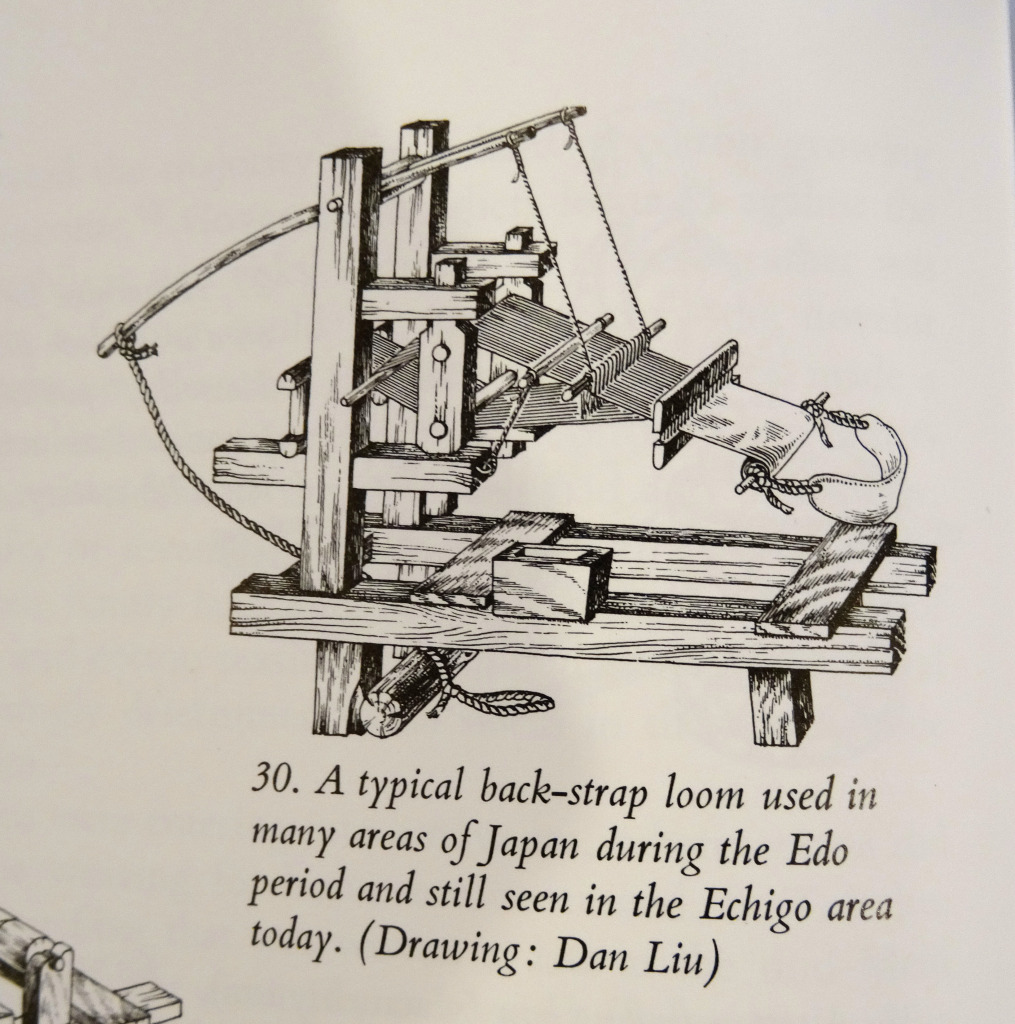
I came across this very nice and detailed drawing of a jibata, the type of loom most associated with weaving sakiori, in Country Textiles of Japan: The Art of Tsutsugaki, by Reiko Mochinaga Brandon.
The next morning I met Sonja at the Center. Because she knows the collection better than anyone else, she was able to pull a comprehensive selection of rag weaving from the archives for me to view. First there were some Slovakian rag rugs donated by Ute Bergmann. I really enjoyed the examples of inlay, clasped-weft and twisted weft in these rugs. They were also notable for using narrow rags in the weft, very different from the typical pencil-thick or more rags used in most examples of rag rug weaving. 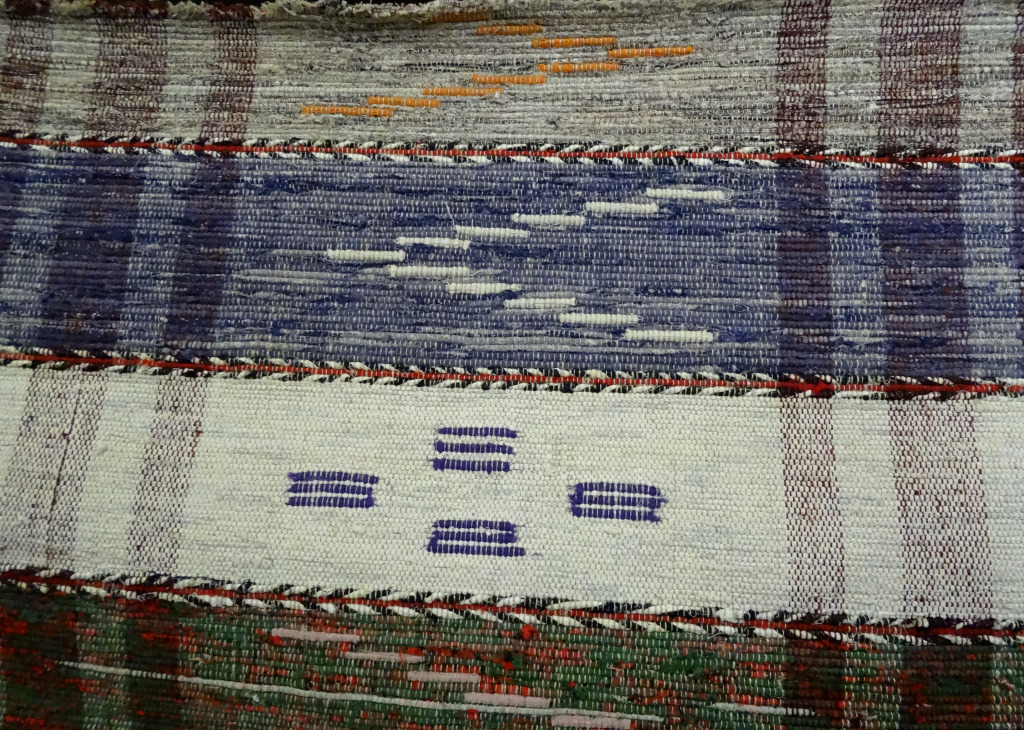
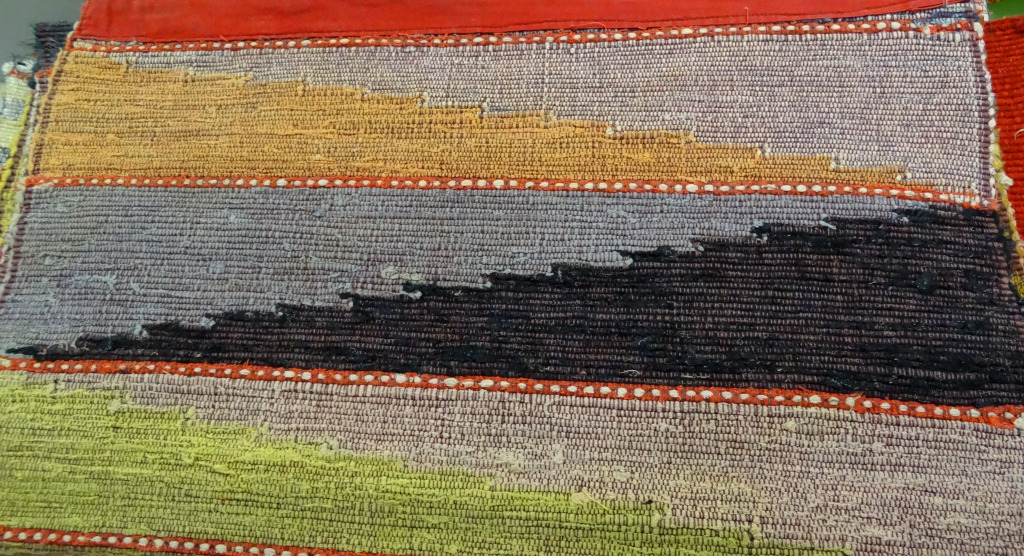
The piece of rag weaving I especially wanted to see is known as the Blake rug (Blake being the name of the family for whom the rug was made, not the name of the weaver) from Watertown, NY. This rug was made using silk gowns from the women in the family and was used as a wall hanging, not a floor rug.
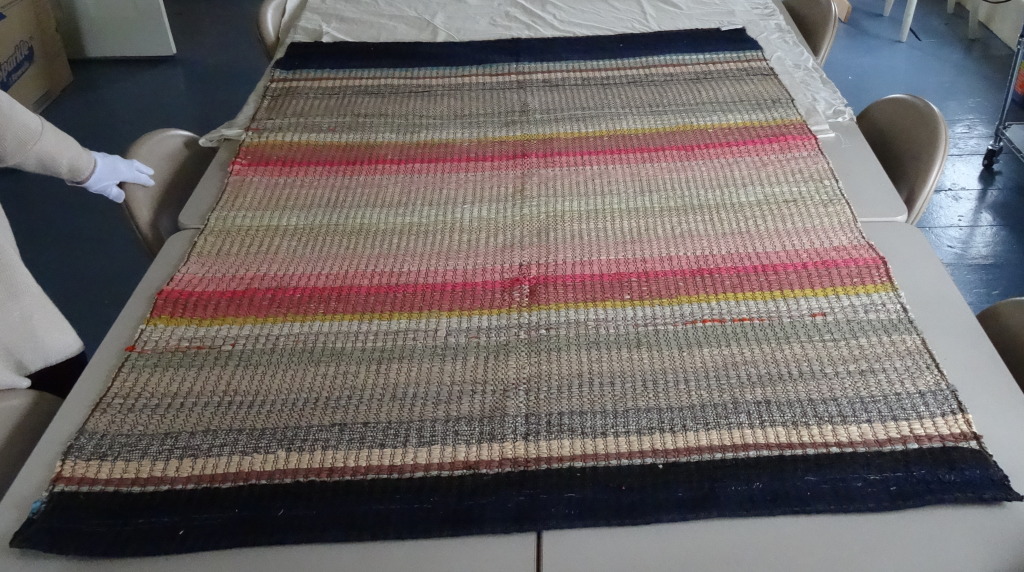
The silk used in these gowns was weighted, in the style of the day, by chemically bonding metal salts to the fabric. This provided the desired effect of silk skirts that rustled during movement, as well as allowing manufacturers to charge higher prices, since silk was commonly sold by weight. Unfortunately, the metal salts weaken fibers and make them more vulnerable to decay from exposure to environmental conditions and pH changes from dyeing. In many places, the silk weft is crumbling into a fine powdery dust. To make all of the rags of equal size, the weaver folded the thinner silks over a cotton core and sewed the edges together. In some places, the cotton core is very exposed.
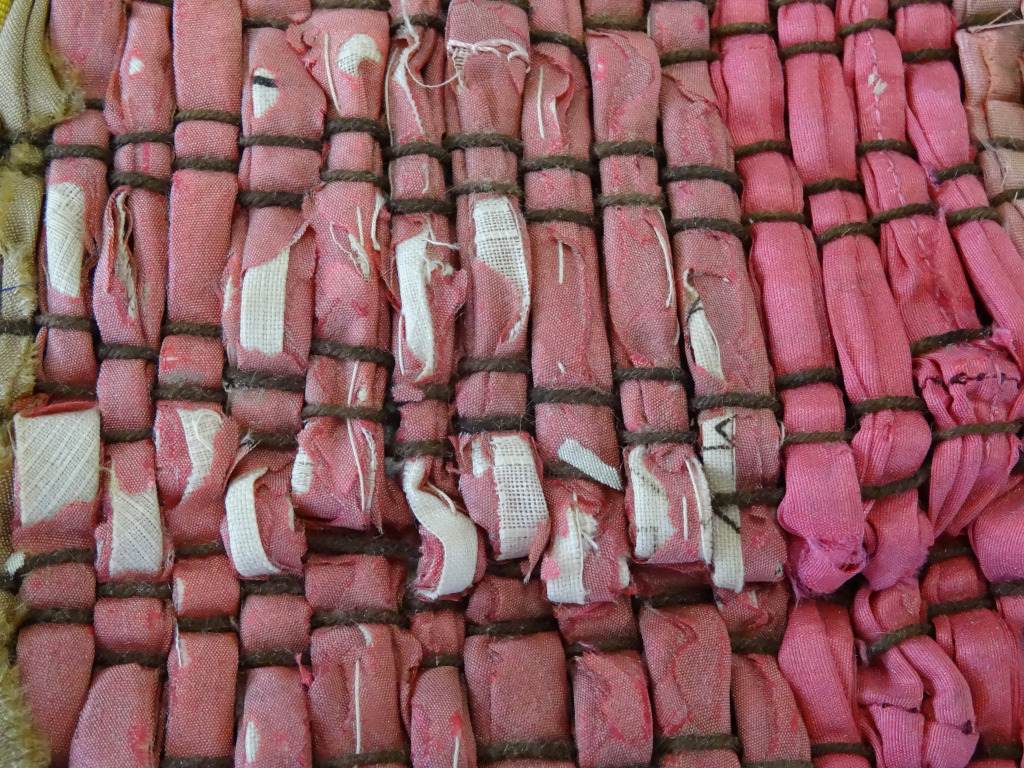
Although it is sad to see this inevitable and unpreventable decay, the rug is still fairly intact and very beautiful. In some places the embroidery on the gowns is visible on the rags.
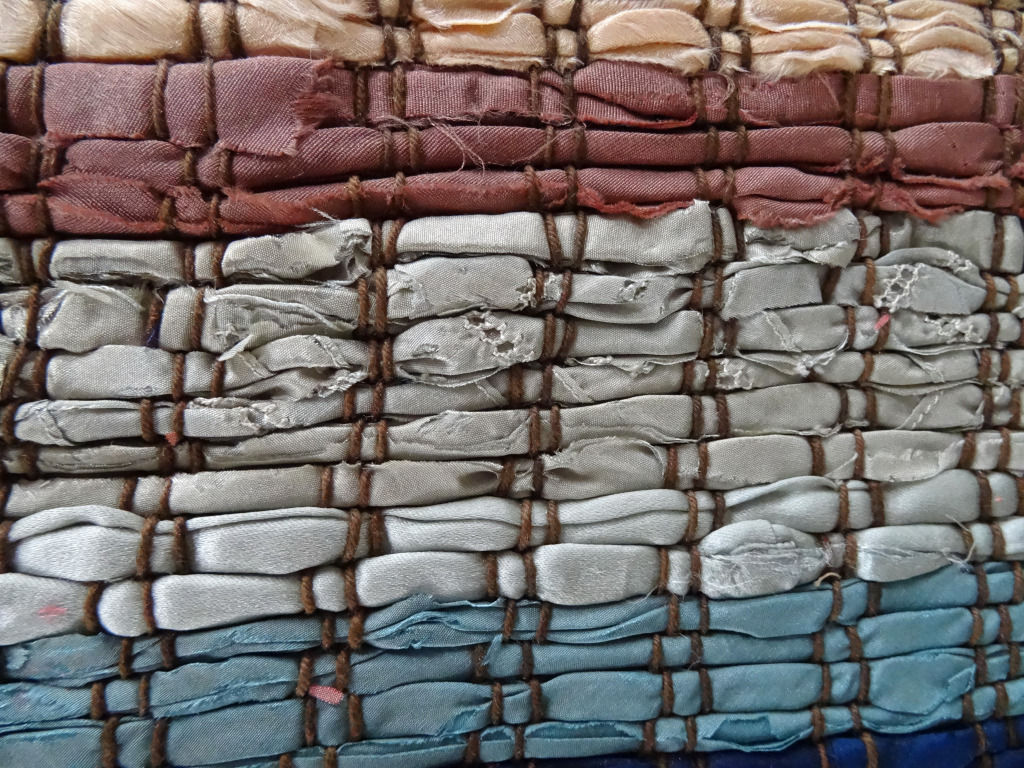
You can also see the stitching lines where the silk was wrapped around the cotton core.
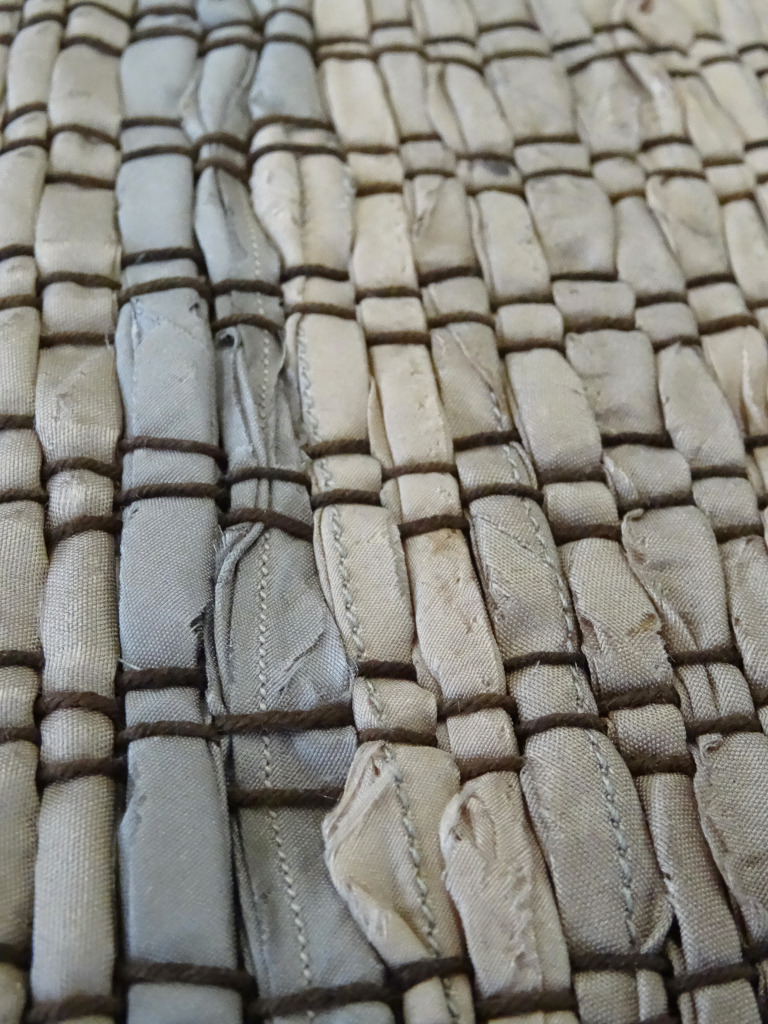
Color was used thoughtfully in the rug, with blue edges fading into yellow, taupe, pink and then cream in the center.
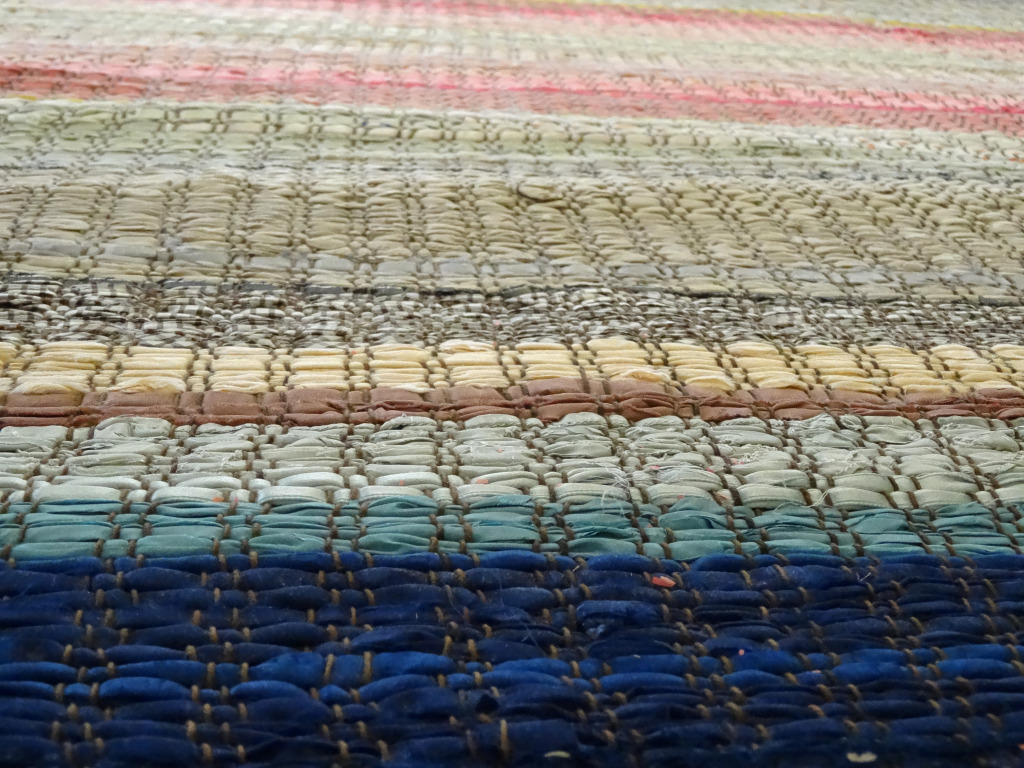
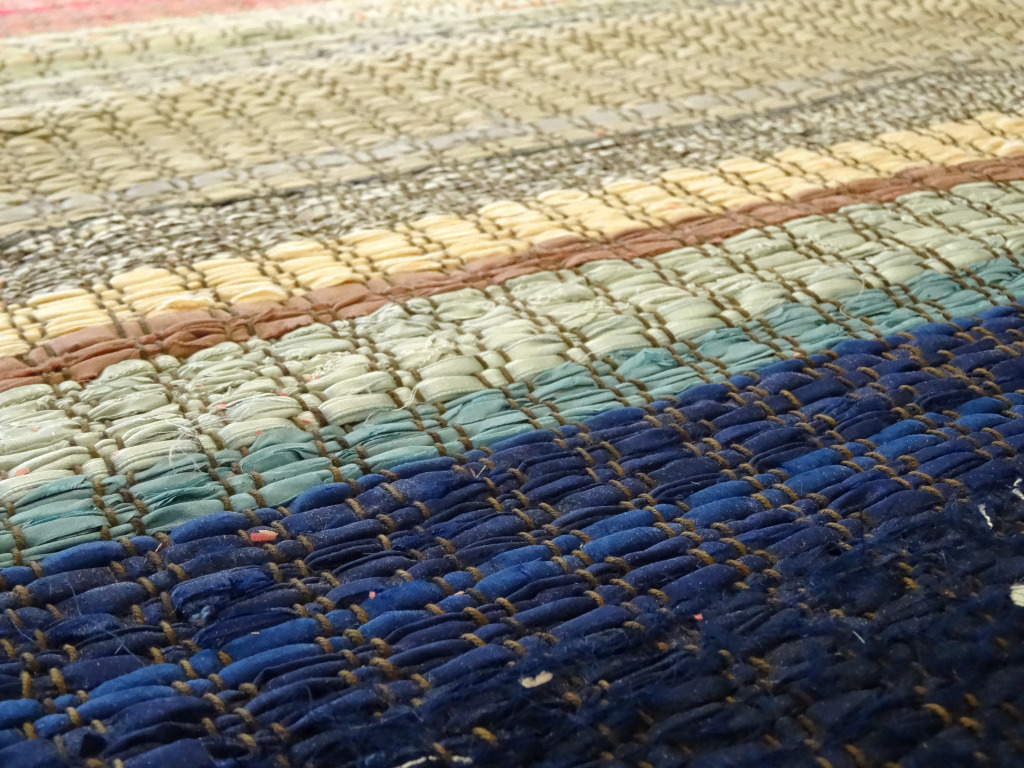
A patterned gown with brown checks adds interest in the mix.
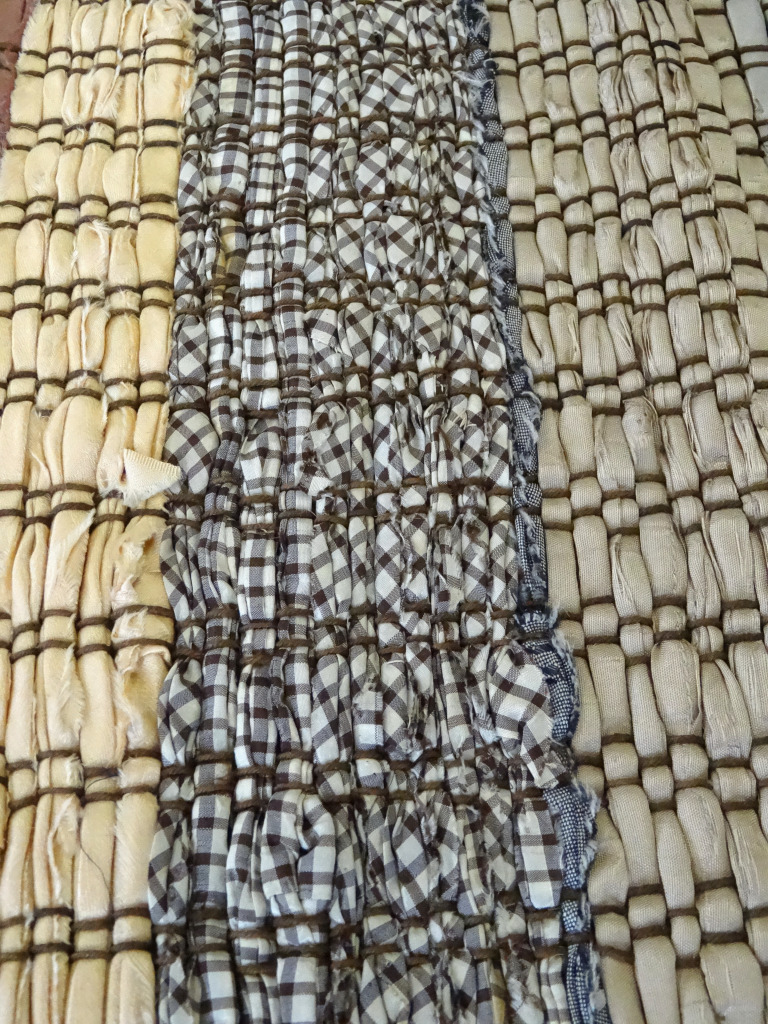
I appreciated the opportunity to see this piece in person. Sonja explained that she does not like to get it out too often because of its fragile state. If you look closely at the above photos, especially in the dark blue areas, you can see what looks like a fine dust covering the fabric. This is not due to dust settling on the rug, but is actually created by the decay of the silk fibers themselves during storage.
I really enjoyed my return visit to the Thousand Islands Arts Center and the opportunity to spend some time with Sonja. She was a kind and generous hostess and has a tremendous breadth and depth of knowledge of weaving and weaving history. I learned a lot during our many conversations and had a lot of fun as well! I am looking forward to more visits in the future.

Hi, you might want to contact John Marshall, who has a vast collection of Japanese books. You can probably make an appointment to access his books or query him to see if his collection includes your field of study.
http://www.johnmarshall.to/index.htm
here is an excerpt from mytripjournal.com http://www.mytripjournal.com/travel-649870 that also lists some reference books….you are correct, unless you hit the correct university library you are not going to find many research resources…
These looms are also documented in Katrien Hendrickx, the Origins of Banana-Fibre Cloth as a body tension frame in Okinawa in the 1940’s, as the 4-legged backstrap loom in Sadae Torimaru’s Spriitual Fabric of the Miao people, the oblique warp sheet loom from the Han Dynasty described by Cheng Weiji in the History of Textile Technology of Ancient China and the Dong weaver in Guangxi Proince in 1990 as documented by Lefferts in Textiles and the Tai Experience. In addition, this loom is referenced multiple times in many Japanese prefectures in the book Base to Tip: Bast-Fiber Weaving in Japan and Its Neighboring countries by Nagano & Hiroi.
Hi Deb, Thanks for all of the great information. I met John this year at Convergence and if I ever get out to California again, I will definitely try to work in a visit to his library, although I believe he is of the opinion that he doesn’t have any references to sakiori to speak of.
I would like to construct a jibata one day and so I appreciate all of your suggestions.
Amanda
Thanks! The photos and descriptions created the experience a virtual museum visit.